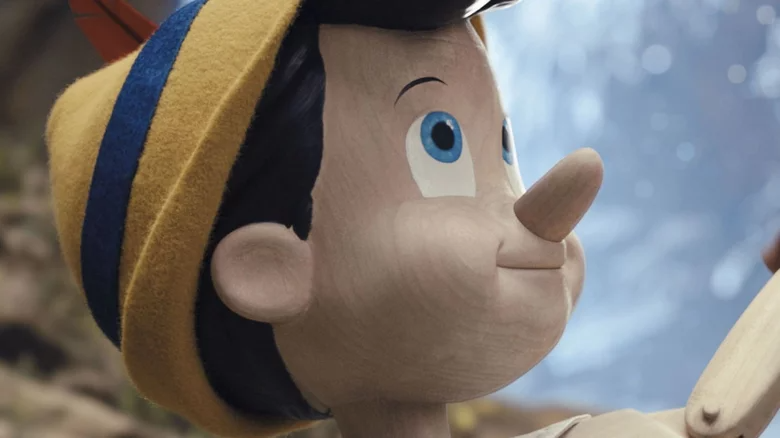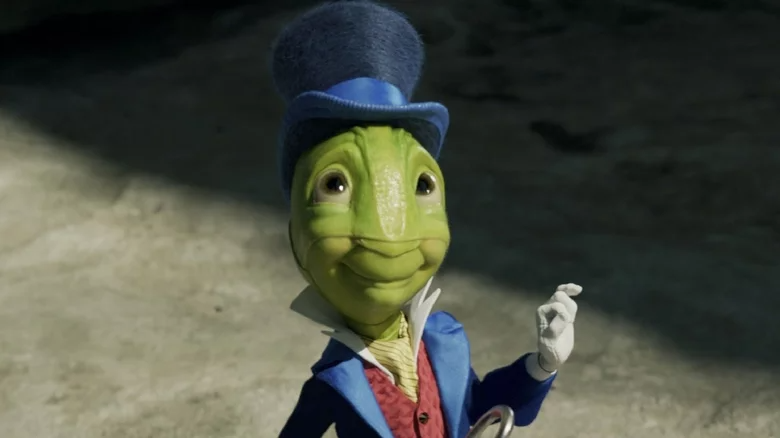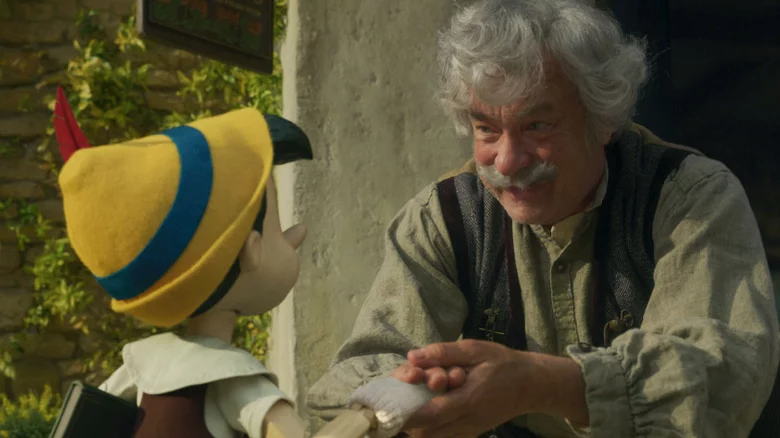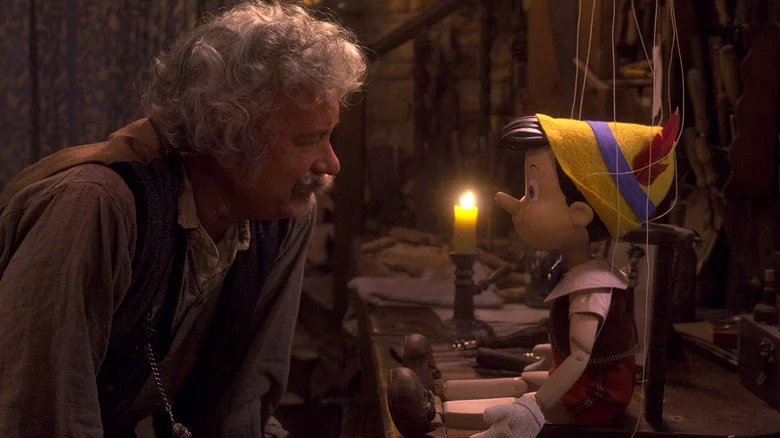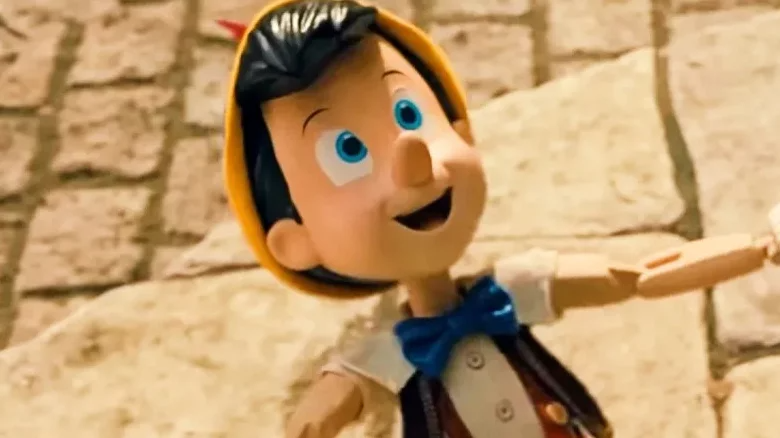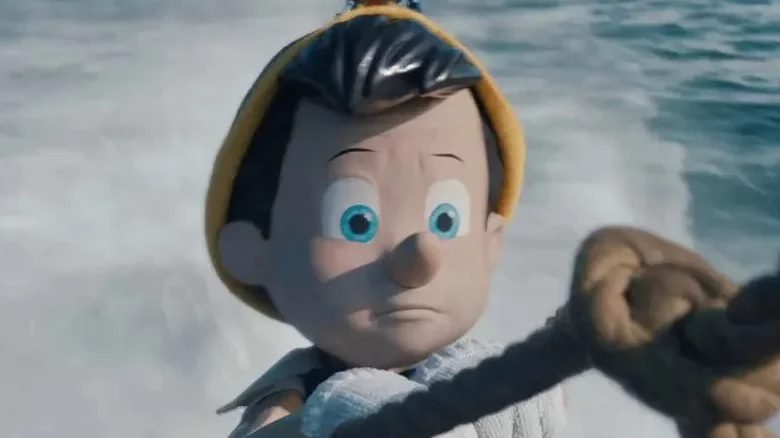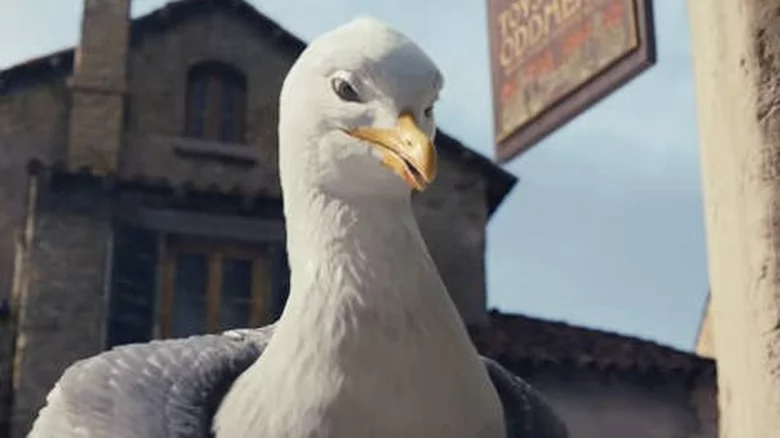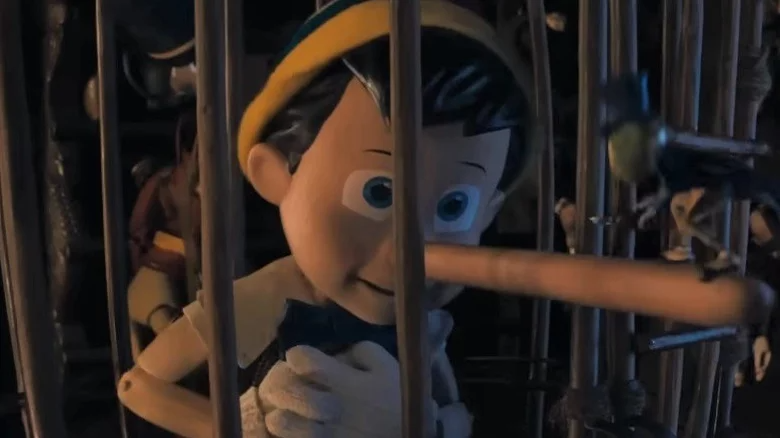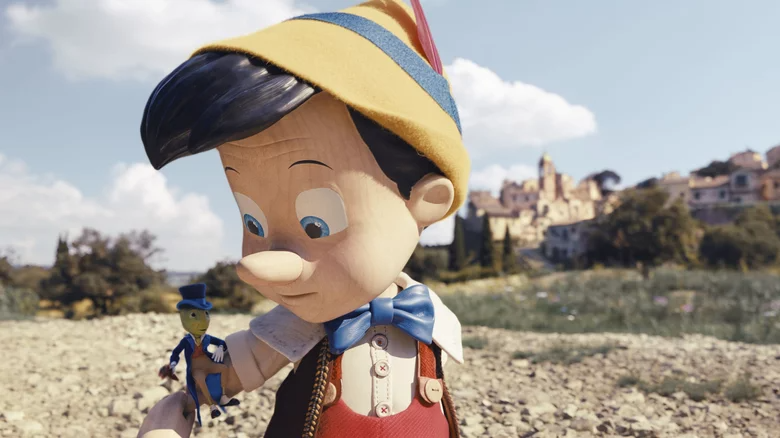“Pinocchio” is the alternately gentle and harrowing tale of the titular character, a marionette-turned-human who endures a series of nightmare trials to learn how the world works and his personal moral code as he does. All of it is a corollary of a 19th-century Italian novel, and it has been adapted for film and television numerous times, including Disney’s enormously successful 1940 animated version and the studio’s 2022 live-action remake of that cartoon In addition to being a narrative about children and for children, “Pinocchio” is also for grownups. Geppetto, a wood carver who is elderly and has lived a life of extreme sadness and loneliness, creates a son for himself out of wood and paint, which ignites the entire plot.
This means that “Pinocchio” might contain both kid-friendly content and lessons, as well as content that is intended only for adults. Only adults will comprehend and be able to appreciate the jokes, phrases, concepts, references, and other parts in the 2022 Disney movie, which stars Tom Hanks as Geppetto. Here are all the key scenes from the most recent Disney “Pinocchio” geared toward older audiences.
Characters swear without swearing in Pinocchio
With the exception of the youngest children, who could object to some of the most frightening and upsetting scenes of the movie when Pinocchio or Geppetto find themselves in grave peril, the Disney-produced live-action “Pinocchio” in 2022 received a PG classification. This is not to suggest, however, that the screenwriters weren’t completely able to get over Disney’s cleanliness mandate and a desire for a very low MPAA classification. That PG rating is also a simple way of expressing “there are no bad words in this movie.” In order to include a few phrases that are appropriate for adults only, they incorporated several wordplay-functioning passages.
In the strange, fantastical world of the movie, Jiminy Cricket, Pinocchio’s chosen external conscience, serves as the audience’s surrogate. He frequently asks rhetorical questions, such as, “What the cuss is that all about?” and uses the effective profanity-replacement “cuss” from Wes Anderson’s PG-and-urbane “Fantastic Mr. Fox.” Later, when Lampwick transforms into a donkey but is not yet aware of his transformation, he asks Pinocchio, “What do I look like, a jackass?” He means literally, in that a
Everyone is way too hard on Pinocchio
Older “Pinocchio” viewers might notice that Pinocchio isn’t really a human until he learns what it means to be a human by experiencing life and adopting a code of ethics based on being “brave, truthful, and unselfish.” That’s all well and good, and those are good values to promote with a movie and instil in viewers, but older “Pinocchio” viewers might notice that Pinocchio isn’t really
Pinocchio is an empty canvas. Pinocchio has only been a living, conscious person for a few hours before he leaves for school (and ends up having a series of terrible and dangerous misadventures). He lacks an interior life, a context, a background, and memories. He deals with the world as it is presented to him, therefore mistakes are inevitable. For instance, he puts too much faith in dubious strangers (like Honest John) and fails to recognise warning signs of impending peril (as with Pleasure Island). He is then criticised, reprimanded, and punished for allowing himself to fall into so many ethical and physical pitfalls that he was unaware of. Pinocchio allows others to exploit him because he lacks the wisdom to do otherwise.
Geppetto gets over Pinocchio’s origin rather quickly
Older viewers develop an emotional response to tales over the course of a lifetime of media consumption. In the first third of “Pinocchio,” released in 2022, Geppetto is the main character. Geppetto is an elderly and lonely man who yearns to experience the joys of fatherhood and being loved by someone. When his marionette Pinocchio comes to life, viewers can join him in his celebration.
Then, very immediately after getting his eternal goal of becoming a father, Geppetto seems to wash his hands of it all, creating a sharp disconnect. Geppetto telling Pinocchio to report to school the next morning after he magically springs to life in the middle of the night and celebrating his birth is unusual and perplexing. He hands him some school materials, unlocks the door, and provides him broad directions to his destination as well as the time he anticipates him returning that afternoon. Geppetto’s abrupt temperature changes from warm to chilly are perplexing. He doesn’t even accompany Pinocchio to school or inform the teacher that they will be welcoming a new pupil. At least he could spend some time with the new son he (allegedly) desired so badly.
Geppetto isn’t too successful in the love department
A highly adult comment about human sexuality is included in the PG-rated 2022 Disney version of “Pinocchio,” yet it is so subtly and meanderingly placed that only older viewers — and ones paying very close attention to the language, at that — would ever notice, let alone understand it. Filmmakers use Jiminy Cricket to address and respond to a recurring query about “Pinocchio”: Why does Geppetto want a boy child so desperately, and why does he believe that making a wooden puppet child and then fervently, aggressively wishing for it to become a real, living child is the fastest and most effective way to achieve that?
Jiminy Cricket offers a joke laced with irony and double entendre to explain it away. When asked, Jiminy Cricket responds, “There are other methods to make a boy. However, Geppetto doesn’t seem to get out often, so he made the best of his resources.
Major philosophical questions are at play in Pinocchio
Since “Pinocchio” is based on a 19th-century children’s book and features a child, most “Pinocchio” film adaptations, including Disney’s live-action 2022 version, are targeted toward children. Additionally, “Pinocchio” deals with some rather complex ideas that are well beyond the comprehension of any but the most mature and philosophically inclined adults and children. The “Pinocchio” tale, and the year 2022’s version especially and openly, is an investigation into ethics, what it means to be human, and whether or not ethics really do set people apart from other animals or inanimate objects.
Immediately after Geppetto creates him, Pinocchio is practically transformed into a real-life boy owing to some magic from the Blue Fairy. While Pinocchio is made to believe that his status as a human is provisional — that he won’t really be real until he’s lived a little bit, and learned how to be “brave, truthful, and unselfish” — Pinocchio is made to believe that this status is provisional — that he won’t really be real until he’s proven his humanity and understood it before he can claim it. Even though Pinocchio is still made of wood at the end of the movie, he has learned these lessons and is now acknowledged as an actual person.
Pinocchio references many other movies
Adults tend to be more perceptive than children, and seeing a big franchise movie, which is sure to be full of allusions to well-known pop culture from the past, is a great time to use and reward these eagle-eye skills. This is the case with the 2022 live-action adaptation of Disney’s “Pinocchio,” which provides several Easter eggs to the viewers with the sharpest and quickest eyes.
This version of Geppetto is primarily a clockmaker, as seen by the wall covered in dozens of mechanical, cuckoo, novelty, and noisy clocks in his workshop, which is shown in an establishing shot. Many of those clocks bear the Disney logo, however it’s only seen for a few frames. Princess Aurora from “Sleeping Beauty,” Donald Duck, some highlights from “The Lion King,” and Roger and Jessica Rabbit from the Disney-affiliated “Who Framed Roger Rabbit” are among the iconic figures that can be seen on Geppetto’s clocks. Robert Zemeckis, who also directed this particular “Pinocchio” film, is the director of the latter. This wall of clocks definitely feels like a homage to Zemeckis’s breakthrough and signature feature — the time-travel-themed film opened with a camera taking in a number of time-telling gadgets. He also co-wrote and directed the 1985 sci-fi comedy “Back to the Future.”
Pleasure Island is needlessly and expensively complicated
In Disney’s original 1940 animated production of “Pinocchio,” the Pleasure Island segment and the representation of the effects of a visit to the kiddie chaotic dream world of joy and misadventure were two of the most memorable (and terrifying to younger viewers) moments. It is a true extravaganza, a brilliant, fireworks-filled show of amusement park rides, minor theft, debauchery, and tomfoolery that had to be incorporated in the 2022 live-action version. Kids can consume as much junk food as they choose, shoplift, damage property, and cheat death, only to discover later that there is a cost associated with the free and alluring admittance.
Older viewers may find themselves at odds with the entire premise of Pleasure Island, even if the concepts of “no such thing as a free meal” and “every action has implications” are ideas that are much more familiar to adults than they are to children. Following their enjoyment of the park’s attractions, Pinocchio and his new companion Candlewick are changed into donkeys. All of this is a part of the park’s evil scheme. They entice troubled kids and give them all the fun they want, but the dark magic of the park turns them into donkeys that may be sold. Pleasure Island’s massive cost, amount of detail, and labor-intensive maintenance don’t appear to be worth the money spent on turning kids into cheap pack animals.
Some animals may speak, others may not
Older viewers may be perplexed by the nature and capabilities of animals in the “Pinocchio” remake from 2022 if they give it too much thought. Regarding who is allowed to think and say and who is not, the rules of the world in which the movie is situated are conflicting. Even if Pinocchio is changed from wood to flesh by the deeds of a fairy the size of a human, there is no fancy explanation provided for why some animals in the Italy of “Pinocchio” can speak while others cannot.
Jiminy Cricket is a bug who speaks and is so well-liked that he is given the responsibility of acting as a conscience. Honest John is an ugly, eternal fox about the size of a tiny person who talks. While Geppetto’s two pets, Figaro the cat and Cleo the goldfish, never communicate, Sofia the seagull does (but only to other animals). Perhaps only wild, autonomous animals can converse, unlike pets. No, since the whale called Monstro, which eats Geppetto, Pinocchio, and the animals, never speaks.
The Pinocchio remake calls out the rich and powerful
It might be erroneous or insufficient to declare Jiminy Cricket, in his capacity as Pinocchio’s external advisor, to be the child’s “conscience.” He never offers any advice or help beyond general worry (when he bothers to linger around, that is), but he does make generalisations about life in the form of snarky retorts to the events of the film as they develop. Older, more seasoned viewers may notice that most of those jokes also have a secondary purpose by making social commentary on the cultural climate of 2022, the year when this adaptation of “Pinocchio” was produced. Jiminy Cricket makes anti-Hollywood remarks in a Disney film, which is surprising given the studio’s influence. He responds, “Honest John? If someone calls themselves ‘honest,’ they’re not. Especially if they’re an agent,” after hearing Pinocchio enthusiastically tell him about Honest John, allegedly a talent agent who can make the boy famous.
There is no shortage of anti-corporate rhetoric coming from that Honest John. He says that once he becomes famous, Pinocchio won’t have to worry about many things, especially taxes, which feels like a politically-charged joke about some privileged individuals. The main inside joke of the scene where Honest John and Pinocchio first meet is that he only considers becoming an actor because Jiminy Cricket, his conscience, isn’t around to warn him that it’s a horrible idea.
There’s a lot of child abuse in Pinocchio
The heroes and villains of the 2022 “Pinocchio,” or more precisely the good ones and the bad guys, are made abundantly and early evident. Older viewers will notice that Pinocchio is supported, encouraged, and championed by every good adult in the film, including clockmaker Geppetto and the Blue Fairy. Pinocchio is a puppet that Geppetto loves so much that he wills him into existence through the Blue Fairy, who gives the youngster the moral duty to justify his claim to be a person. On the other hand, the bad folks are purposefully nasty, exploitative, and abusive; they’re not just harsh, crude, or gloomy.
On his way to school, Pinocchio encounters Honest John for the first time outside of Geppetto and the Blue Fairy. Honest John flatters Pinocchio and tells him lies in order to sell him to a theatre company. The puppet show master Stromboli takes Pinocchio under his wing, where he is subjected to more painful wrath as the villain throws him across a room and into a cage. Nevertheless, Pinocchio makes it to school, where he lasts only five seconds before being expelled — literally, forcefully, and with shocking violence — by the schoolmaster because school is for “real children.”
There’s a lot going on with Jiminy Cricket
Whether they like it or not, older viewers watch movies with a more critical eye than do younger viewers, constantly scrutinising what they see. This is especially true when the entertainment is aimed at youngsters, whose brains may require a little more stimulation. From that vantage point, it becomes apparent that Jiminy Cricket in the 2022 live-action “Pinocchio” version is a complex and sinister character with a somewhat hazy past.
When Jiminy Cricket sings the classic “When You Wish Upon a Star,” made famous by the first “Pinocchio,” he does it with a knowing wink, as if to suggest that he is aware that he and his song are well-known worldwide or that it even exists in this fictional universe. He continues by saying that even though he is recounting the tale of Pinocchio and Geppetto in the present, it is actually set in the distant past. Given that “Pinocchio” is set in the 1800s, Jiminy has to be well over 200 years old. He has experienced a lengthy life filled with numerous chapters, such as how he arrives at an Italian village for no apparent reason other than the fact that he has drifted there. His appointment as Pinocchio’s conscience soon follows, more out of proximity than any type of moral authority. He might even be a little weird, so he’s not the best moral compass; when Geppetto’s selling of “oddments” is mentioned, he slyly comments, “Sounds like my sort of place.”

